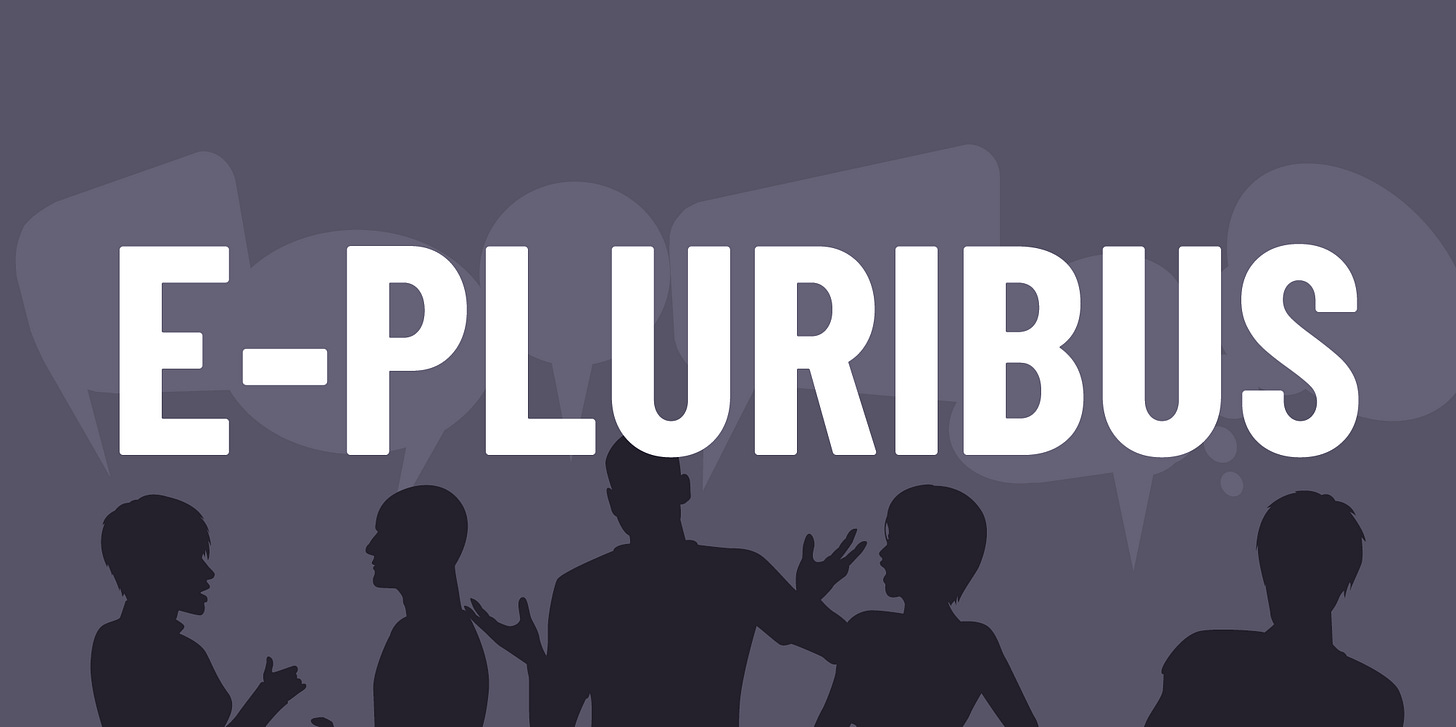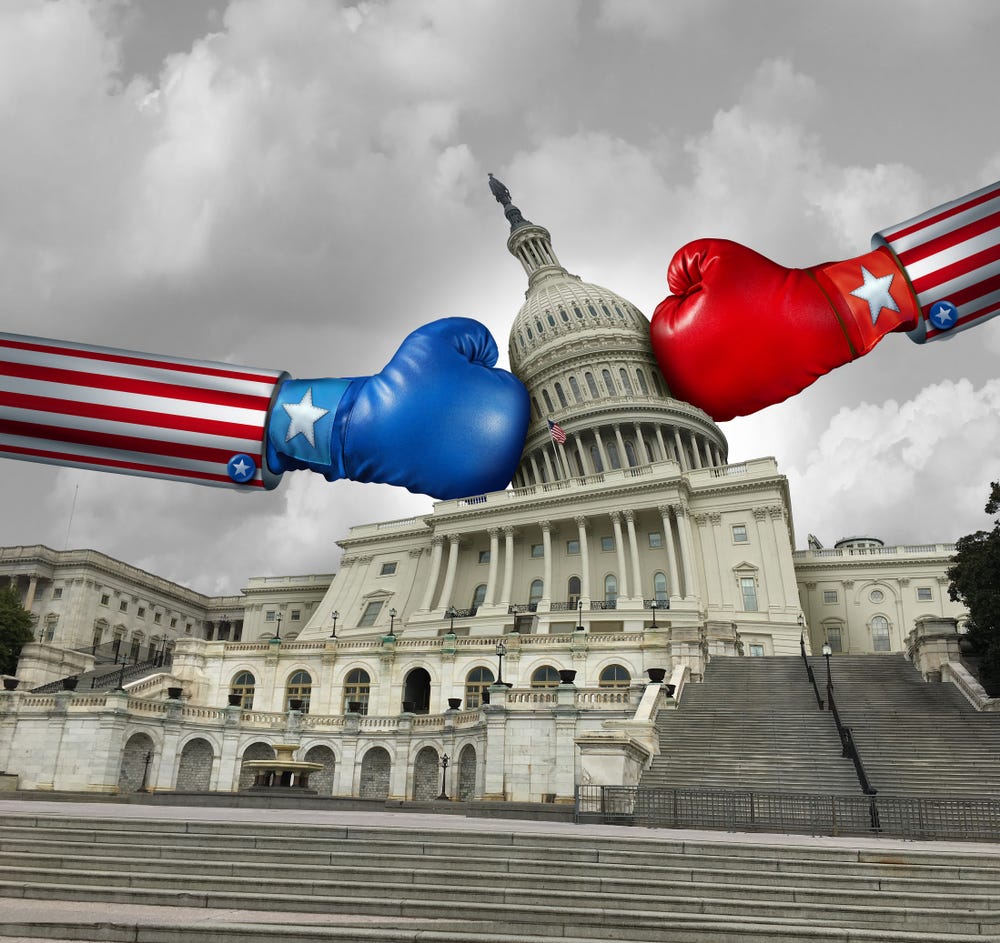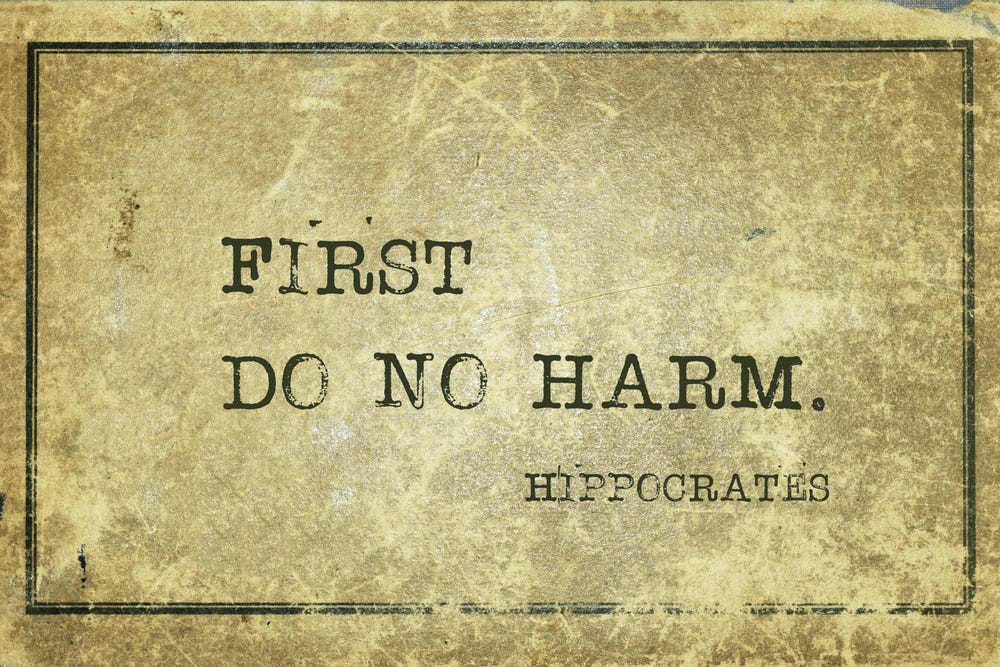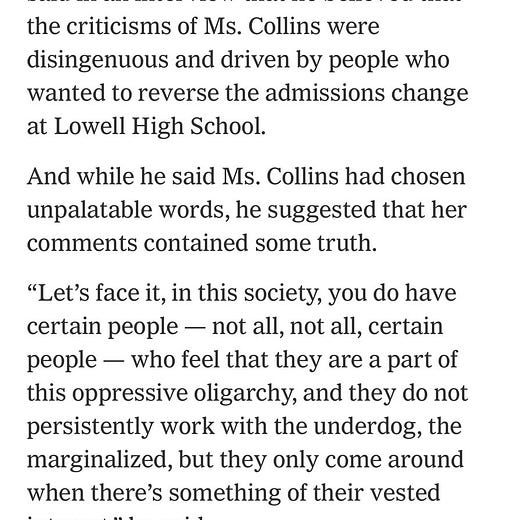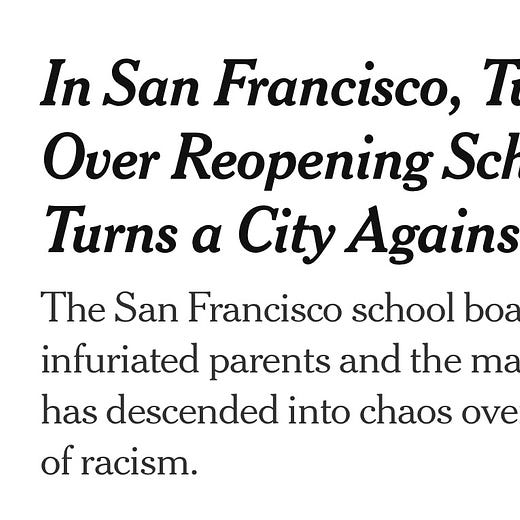E-Pluribus | March 16, 2022
Congress's incongruous battle with Big Tech, Hippocrates is rolling over in his grave, and Princeton bungles free speech.
A round up of the latest and best writing and musings on the rise of illiberalism in the public discourse:
Kir Nuthi: Congress Is Fighting With Itself in Regulating Big Tech
Congress has never been in danger of being accused of unwavering consistency, often bending this way and that in search of votes and consensus, but Kir Nuthi at The Dispatch says Congress’s recent actions regarding Big Tech regulation are particularly erratic. While insisting the industry police content to assure users a “safer” experience, other recent efforts in the House and Senate will ultimately make it harder to do so.
Last summer, the House Judiciary Committee hastily rushed a package of five bills to target only a few companies with radical antitrust reforms including: discouraging mergers and acquisitions, mandating interoperability, and banning self-preferencing. Earlier this year, Sen. Klobuchar and Sen. Grassley pushed the American Innovation and Choice Online Act, companion to the House American Choice and Innovation Online Act, that included a ban on self-preferencing and mandated nondiscrimination of goods and services on websites. From an antitrust perspective, nondiscrimination has largely focused on self-preferencing to target competitive relationships between companies online—how Amazon promotes its own brands like Happy Belly or Whole Foods 365, how a Google Search for restaurants has Google Maps functionality, or even how Amazon offers Prime Delivery.
Only weeks later, the Senate Judiciary Committee also passed antitrust reform targeting app stores—the Open App Markets Act—to mandate that Apple and Google open up their phone operating systems to third-party app stores, payment processors, and other forms of side-loading.
But in pushing to stop Big Tech from this alleged gatekeeping, Congress is forgetting free demands they’ve made of America’s tech industry regarding free speech and online safety. The aforementioned antitrust bills run counter to congressional content moderation proposals and could make it harder for websites to moderate user-created content by opening up them to litigation if these websites remove rule-breaking content by competitors. Many of the very same lawmakers pushing antitrust reform voted to pass the EARN IT Act out of committee to the Senate floor—a proposal that would increase the risk of litigation for services that host user-created content and private messaging.
Put simply, our lawmakers are fighting against themselves. They want more content moderation regulation to protect Americans from harmful speech, but no content regulation when it comes to antitrust. By sending severely mixed messages on how it wants online platforms to moderate content, Congress is setting the scene for regulations that disregard their content moderation implications to hurt both online safety and free speech.
Read the whole thing.
John D. Sailer: First, Brook No Dissent
In recent years, many institutions have subjugated their primary reasons for existing to the diversity, equity, and inclusion (DEI) juggernaut. John Sailer at City Journal reports that the Liaison Committee on Medical Education, the medical school accreditation organization, is doing its part to make sure medical education gets its priorities right, and that means bumping DEI to the top of the list when it comes to preparing healthcare workers for their careers.
In November, OHSU [Oregon Health and Science University] adopted a 24-page Diversity, Equity, Inclusion and Anti-Racism Strategic Action Plan, created “in alignment with accreditation requirements.” The new plan makes it virtually impossible for faculty to object to DEI measures without jeopardizing their careers. It institutes ongoing training on “DEI and anti-racism” with “consequences for individuals who are not compliant with the required training.” It also mandates new performance reviews that evaluate “how the employee is contributing to improving DEI, anti-racism and social justice,” along with a social justice section in faculty promotion packages, again reinforced with unelaborated “consequences.” The school even issued its own Inclusive Language Guide, with a long glossary including entries for “Karen,” “Ken,” “whiteness,” “micro-invalidation,” and “white fragility.”
The LCME likewise deemed the University of Minnesota Medical School unsatisfactory in diversity and cultural competence. The school’s accreditation page lists its progress in both areas: hiring a new vice dean for DEI, hiring new DEI directors to “enhance existing DEI curriculum across all 4 years,” and working with the Medical Education Student Reform Coalition. Like its predecessor group, MERSC insists on radical policy changes, calling for a curriculum that focuses on “health inequity,” “systemic racism,” and “white supremacy.”
[ . . . ]
Such pressure from the accrediting organization might explain the disproportionate emphasis placed on DEI in American medical education. UNC provides a good example: of the university’s 24 DEI officers, eight are employed by the medical school. Yet UNC’s combined undergraduate and graduate enrollment is 31,538, while the school of medicine’s enrollment is just 2,393. The pressure to adopt extensive diversity plans appears too great for both established institutions (such as Michigan Medicine) and upstart schools (such as Kaiser Permanente’s newly created Bernard J. Tyson School of Medicine) to resist.
Read it all here.
Edward Yingling & Stuart Taylor Jr.: How Princeton Eviscerated Its Free Speech Rule and Covered It Up
Along with Harvard and Yale, Princeton University remains an icon of higher education in the United States. A recent incident surrounding the university’s response to a controversy involving professor Joshua Katz, however, calls into question the fabled institution’s commitment to full academic freedom and the protection of its faculty to carry out that mission, write Edward Yingling and Stuart Taylor Jr. at Real Clear Politics.
The policy to which President Eisgruber referred, “University-wide Regulation 1.1.3, Statement on Freedom of Expression,” begins: “Because the University is committed to free and open inquiry in all matters, it guarantees all members of the University community the broadest possible latitude to speak, write, listen, challenge, and learn.” The full regulation, adopted in 2015 by a vote of the Princeton faculty, was modeled verbatim on the so-called “Chicago Statement,” which also originated in 2015, at the University of Chicago. It is widely regarded as the gold standard for robust protection of free speech on campus at private as well as public universities. And as Eisgruber admitted, it very clearly protects Professor Katz’s article. It is a rule that applies to faculty, students, and administrators – and certainly to the university itself.
[ . . . ]
In October 2021, eight distinguished Princeton professors filed a formal complaint expressing grave concern about the treatment of Professor Katz and stating that the presentation violated several Princeton rules in its treatment of him. In December, in an official response to the complaint, Michele Minter, Princeton’s vice provost for institutional equity and diversity, rejected it in every respect. The Minter letter found that the presentation was not an “official Princeton document,” an assertion that cannot pass the laugh test: The presentation says it was produced by two Princeton departments; its public announcement to the entire Princeton community was sponsored by ten departments and offices of Princeton; it was placed on the official Princeton website by Princeton administrators; it was introduced to the entire entering class by a Princeton dean; and it contains the trademark and copyright of Princeton. Under Princeton’s written policies, “Use of the University’s … trademarks symbolizes authority to conduct such activities on behalf of the institution.”
The Minter ruling compounded the absurdity by holding that the Katz language was not protected by the free speech rule or by Princeton’s rules protecting against punishment or mistreatment of people for their speech. The ruling retroactively reinterpreted the rule by lifting a definition of “harassment” from a completely different rule and applying it to the free speech rule, with no justification for doing so from the language or intent of either rule.
The result of the Minter misinterpretation is to render the free speech rule a shell – a rule that would protect only a small subset of the speech that the rule’s language and intent clearly do protect. A student or faculty member can be bullied or harassed right off the campus for speech, even for speech that has been found by the president of the university to be protected.
Read it all.
Legends of Dissent, Frederick Douglass, part 3
Here’s the third installment in our new graphic vignette feature, Legends of Dissent: Frederick Douglass at the Tremont. As always, we welcome your feedback.
Around Twitter
Jesse Singal, on a different kind of “privilege”, with some pushback from Tim Spalding:
Josh Barro contrasts the New York Times’s treatment of “offensive” comments:
Via Andrew Sullivan, the prime ministers of the Czech Republic, Poland and Slovenia with a moving show of support for Ukraine:
And finally, he keeps using that word. I do not think it means what he thinks it means.



